Today's Monday • 18 mins read
— Researched and written by Dr. Sandip Roy.
Around 300 BCE, Zeno of Citium founded one of the most profound schools of philosophy in the world — Stoicism.
Stoicism eventually became one of the most popular and far-reaching philosophies across the Roman world. Today, Stoicism is no less influential than it was during the Hellenistic times.
Interestingly, the name Stoicism comes from Stoa Poikilê, a famous raised porch in a marketplace in Athens, Greece, where Zeno started teaching.
But what do we know about this mysterious merchant-turned-philosopher?
Life of Zeno, The First Stoic
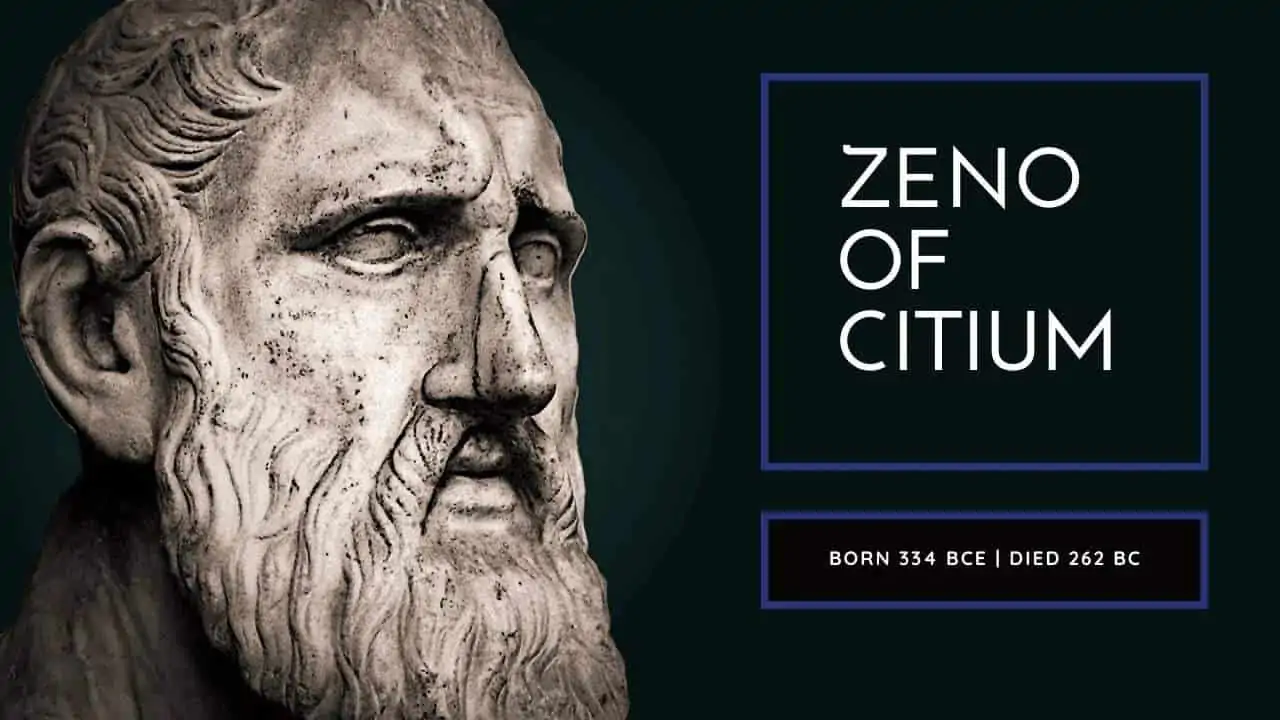
This is the fascinating life story of Zeno, the first Stoic, whose legacy lives on even twenty-two centuries after he left this world. But let’s start a hundred years before he came to Athens from Cyprus.
The Death of Socrates
On a late evening in 399 BCE, 280 out of the five hundred jurors who sat there voted Socrates guilty and gave him the death sentence. They charged the rebel philosopher with refusing to honor the gods recognized by the state of Athens and of corrupting the Athenian youth with his lectures.
Socrates gave a three-hour-long defense, but he never made a single appeal for mercy.
That day, in that open court in the Athenian Agora, sat a 27-year-old spectator, Plato. Later recognized by history as the most famous student of that condemned philosopher, Plato saw and heard what happened.
The slave who served the death potion to Socrates told him:
Just drink it and walk around until your legs begin to feel heavy, then lie down. It will soon act.
Socrates took the cup and drank to the last drop of the poisoned hemlock.
Thus, the greatest Greek philosopher of his time willingly let himself die. It was suicide because Socrates could have escaped easily, as his pupils had planned, or even asked for mercy, and would have received a pardon.
Socrates, 70 years old then, inspired generations of thinkers and schools of philosophy in his life and after his death.
Socrates declared before his judges, “There is no evil to a good man either in life or after death, nor are his affairs neglected by the gods.”
Perhaps that day, he presaged the crux of Stoicism, that virtue was the only good in human life.
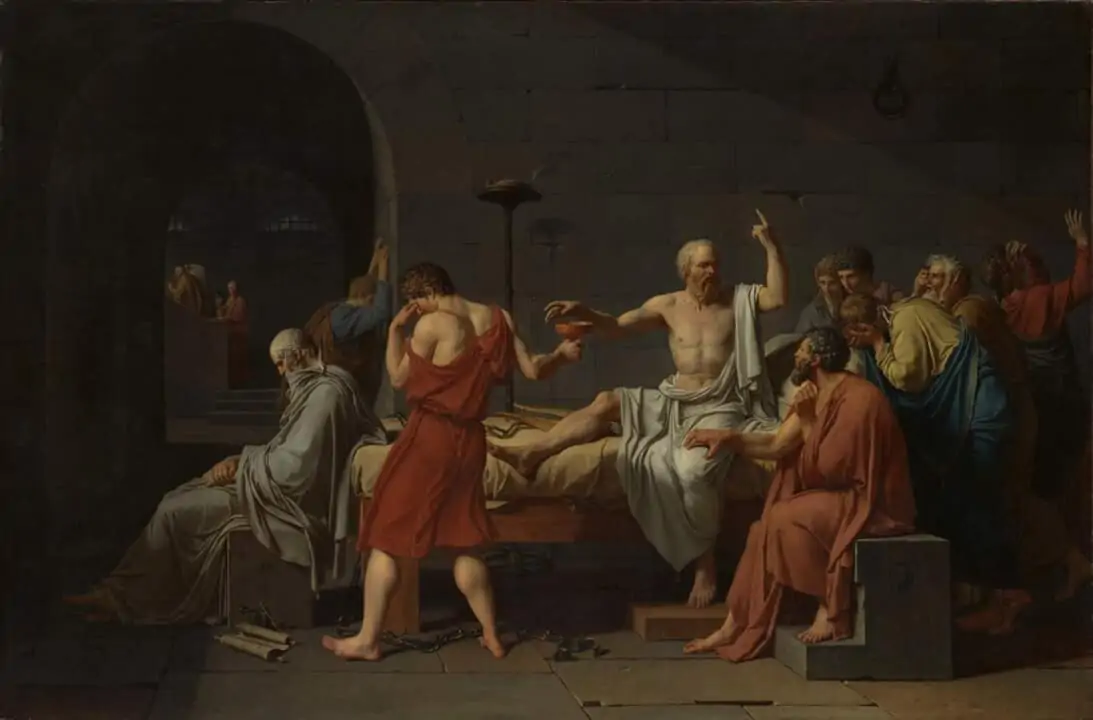
The First Mentor of Zeno
A little more than a hundred years after Socrates courted death, a 22-year-old merchant landed on the shores of Athens. He had just survived a shipwreck on his way from Phoenicia to Piraeus.
He was Zeno from the city of Citium or Kition, Cyprus. His ship was carrying the cargo of Royal or Imperial Purple, a precious dye extracted from murex sea snails that colored the robes of the kings.
The loss left him completely devastated as his fortune dissolved into the ocean. Trying to get a grip on his situation, Zeno, dark and gaunt, walked around the town.
Some say he visited the Oracle of Apollo at Delphi to find out about his future.
The oracle told him, “To live the best life, talk to the dead.”
It is stated by Hecato and by Apollonius of Tyre in his first book on Zeno that he consulted the oracle to know what he should do to attain the best life, and that the god’s response was that he should take on the complexion of the dead. Whereupon, perceiving what this meant, he studied ancient authors.
— Diogenes Laërtius in Lives of the Eminent Philosophers
Sometime during his wanderings, he walked into a bookstore and plucked Memorabilia, a book by Xenophon, a soldier who fought for Persia and Sparta and later became a historian and philosopher.
He began to read through the book that celebrated and defended the life and philosophy of Socrates. Deeply impressed, Zeno went to the shop owner to ask where he could find a philosopher like Socrates on that day.
The bookseller pointed him to Crates of Thebes, the most remarkable Cynic philosopher of that time, who was walking by the shop.
What happened next on that fateful day changed his course of life.
Zeno rushed out to meet Crates, and after talking to him, decided to leave his life as a tradesman and dive deep into philosophy.
Now he understood what the oracle meant, that to make something worthwhile of his life, he must read books by authors long dead.
“I made a prosperous voyage when I was shipwrecked.”
— Zeno
His first hands-on mentor was Crates of Thebes. However, in spirit, Zeno’s first mentor was Socrates.
Zeno’s Cynical Heritage
Today, cynicism means being distrustful of or frustrated with someone because of bad experiences in the past.
But in those days, Cynicism was an influential school of philosophy.
It was founded by Antisthenes, a pupil of Socrates. However, the most famous Cynic was the idiosyncratic Diogenes of Sinope, who found outrageous ways to popularize the Cynic principles.
The word cynic comes from the Greek kynikos, meaning dog-like.
Cynics held that people should not be limited by social norms and traditions. Instead, they should live as Nature intended, like a dog. Because dogs are better off being happy than humans.
Cynics were happy to live without unnecessary possessions and did not bother about the desires and expectations of others.
True to their roots, some of them even barked at those who bothered them.
They were great philosophers, but their immodest actions shocked people beyond belief. They often did things that violated all limits of decency and etiquette, without feeling shame, guilt, or remorse.
Now, Diogenes was someone who took it to another level, crafting a style of living and teaching that was a class of its own.
Diogenes did not own anything, except a tattered gown and a cup. Whenever he needed something, he begged for it.
He slept in a wine cask in the marketplace. He frequently ate onions to offend people with his foul breath, urinated on people, and excreted feces wherever he wanted. It is said that Diogenes even relieved his seminal fluid in public.
He moved around with a lamp in the daytime, telling people he was searching for an honest man.
Diogenes told his followers that when he died, they should throw his body away so that wild animals could feed on it.
However, the citizens of Corinth loved Diogenes too much to abandon his memory as he had wished. They built a Parian marble statue of him holding up a lantern with a dog beside.
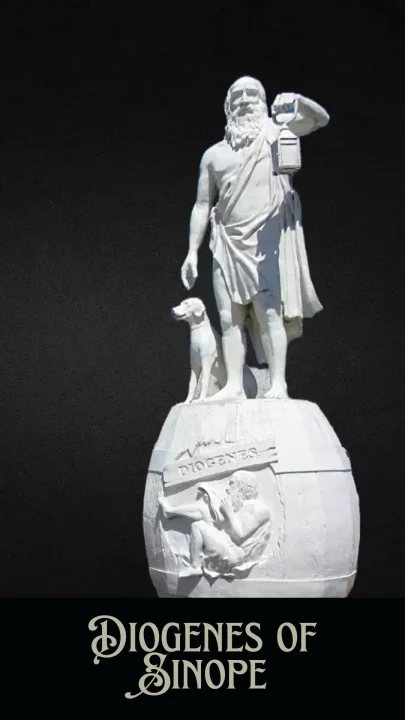
The Cynics were fierce in speaking their mind at the cost of offending all. A legendary example of that intense love of free speech was this:
Once Diogenes was soaking in the morning sun when Alexander the Great came by and stood over him, and asked:
Is there anything I can do for you?
Diogenes replied:
Yes. Stand out of my sunlight.
Alexander went speechless. Then laughed and remarked:
But truly, if I were not Alexander, I would like to be Diogenes.
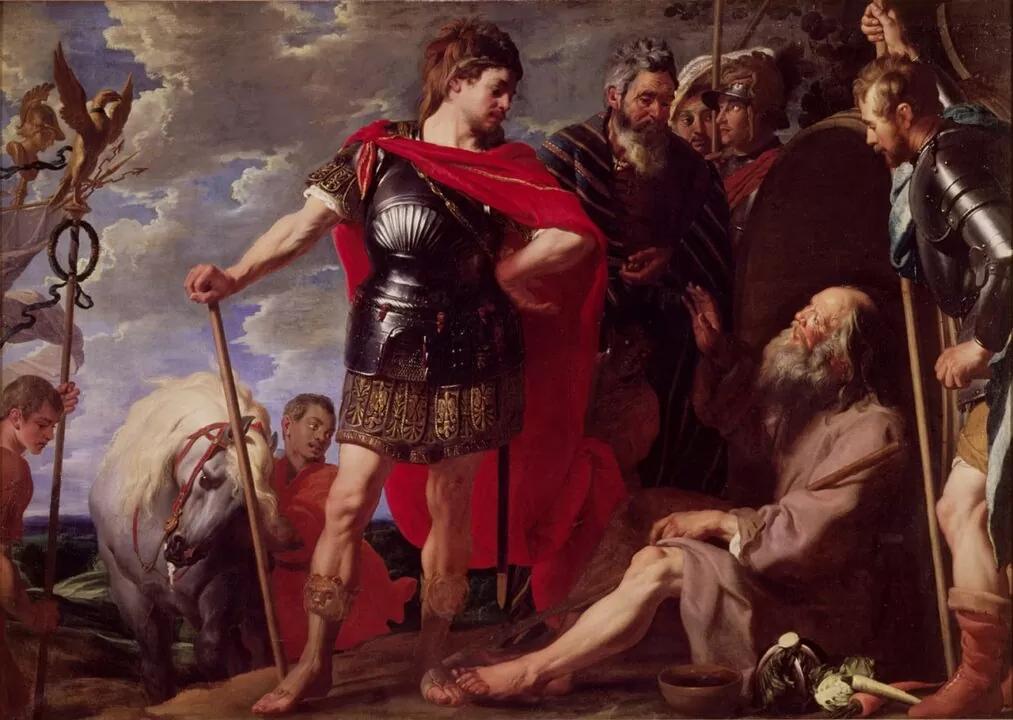
Now, Zeno’s mentor, Crates of Thebes, was the most well-known follower of Diogenes. He was a born rich man who gave away his wealth to live like a destitute on the streets.
He was known as “The Door-Opener” because whichever house he went to, even if he entered uninvited, people welcomed him with honor.
As a Cynic, Crates did his fair share of scandalous deeds.
One of them was getting physically intimate with his philosopher wife Hipparchia in full view of the public. Another was allowing his daughter a trial marriage for a month to each of her potential suitors.
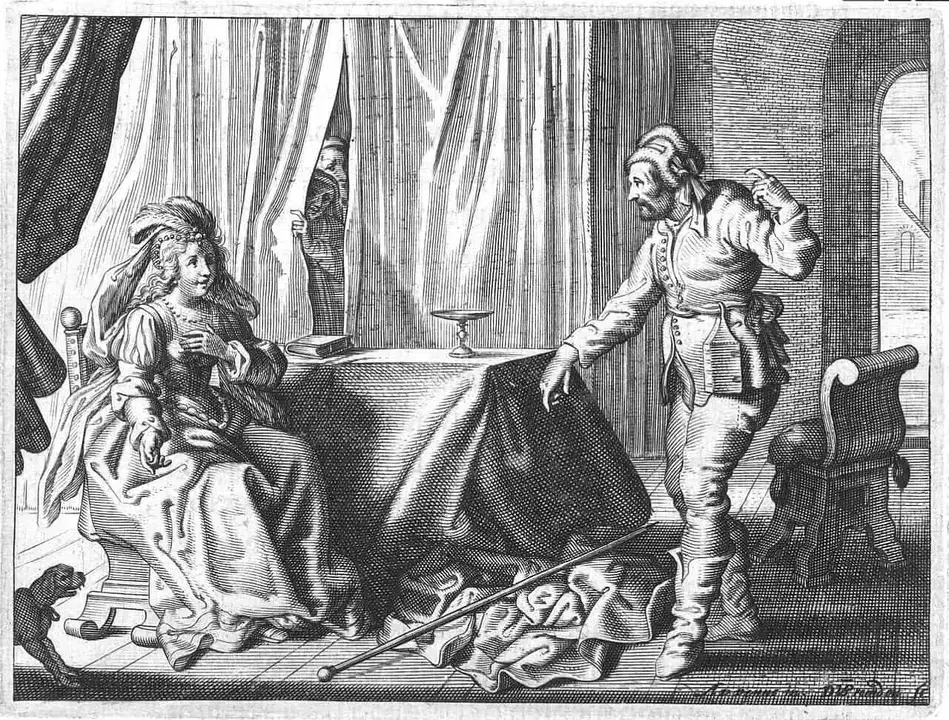
Crates of Thebes was the man who taught Zeno.
The Schooling of Zeno
Once, Crates made Zeno carry a pot of soup around Athens all day long. Suddenly, out of the blue, Crates lunged at Zeno and smashed his pot, spilling the soup all over him in front of a crowd.
Zeno, embarrassed, began to run away. At this, Crates laughed and called out:
“Why are you running, little Phoenician? Nothing terrible has happened to you!”
It was his way of teaching Zeno that the things and responsibilities we carry can suddenly get destroyed, but this should not make us fear the judgments of others.
The incident cured Zeno of his overbearing self-complex.
From the Cynics, the first thing Zeno learned was to ignore the prestige and honor the world gave to a man as his true worth. He also absorbed the Cynic idea that a simple, virtuous life was sufficient for happiness.
But Zeno was prudent enough not to take up the brazenness of Crates while learning his philosophical ways. He lived like a traditional Athenian, respecting social norms, without compromising his principles.
Under Crates, he wrote a book called Republic. Donald Robertson, the author of How to Think Like a Roman Emperor, writes:
…the Republic of Zeno was perhaps the most important early Stoic text and depicts a Utopian political state.
Zeno’s Republic imagined a society in which men and women are equal, there is no injustice or crime, and where everyone lives in accord with nature and reason. There is no greed or hatred, no need for laws or courts, and all there live in love.
Unfortunately, none of Zeno’s writings exist today. His life and teachings were later chronicled by Diogenes Laertius in his The Lives and Opinions of Eminent Philosophers.
Zeno also learned from Stilpo of the Megarian school of philosophy. He taught Zeno that the worst mistake is to say ‘Yes’ too quickly to any request, as it makes that person give away his peace of mind.
Once, Crates tried to pull Zeno away from Stilpo’s class, at which he shouted:
“If you lay violent hands on me, you’ll have my body, but my mind will remain with Stilpo.”
— Zeno
His other teachers were Diodorus Cronus, Philo, Xenocrates, and later his successor Polemo who headed the Academy.
Zeno: The First Stoic
After studying for about 20 years, Zeno eventually founded his school of philosophy in 301 BCE.
He began lecturing from an open-air colonnade in the Agora, a marketplace. He wanted his style to be similar to that of Socrates, who used to talk philosophy with slaves, paupers, women, craftsmen, and foreigners moving through the same Athenian Agora.
Zeno imagined his school of philosophy as accessible to all, accepting anyone as a student, unlike some other schools that only taught the wealthy and the elite in hallowed gymnasiums.
However, he had no love for the spiritless crowds. So he charged admission to keep those off who were not genuinely interested in listening to his talks.
Zeno’s lectures drew many followers, including wealthy patrons and kings. They were initially called Zenonians. But it was not something they, or even Zeno himself, liked. They felt Zeno was not the perfect wise one.
The arcade where Zeno taught was a roofed platform with pillars and a wall. The Athenians knew it as the Stoa Poikilê or the Painted Porch.
So, after Stoa, they were called Stoics, and their philosophy was Stoicism.
Stoa Poikilê was built by the statesman Peisianax in the 5th century BCE, and its wall displayed some of the most acclaimed paintings of that time.
Unfortunately, the Stoa was also the place where 1400 Athenians were murdered during an anti-democratic rising in the times of Socrates.
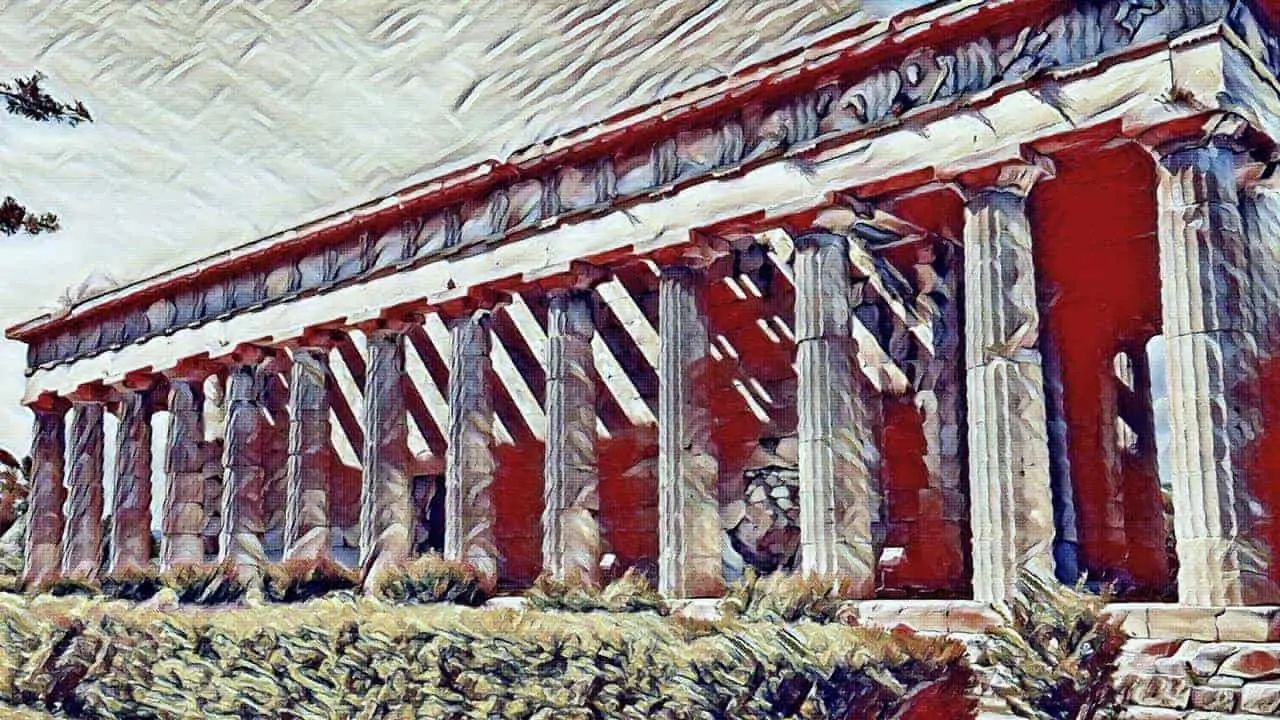
All his life, Zeno taught from the same Stoa. He even died at the same place, around the same age as his first mentor, Socrates, at 71.
While he lived, Zeno became famous, and people held him in high praise. The Athenians gave him the keys to the city walls, awarded him a golden crown, and built him a bronze statue in his lifetime.
Since his shipwreck, he never left Athens. But he never accepted citizenship of Athens and died as a resident foreigner from Cyprus, his native land.
After he died, he became even more famous. An impact-crater on the Moon was named Zeno in his honor.
Roots of Stoicism
Zeno was clear that most Athenians suffered because they desired what they didn’t have or feared losing what they already had. And their pursuit of pleasure in a world where everything perishes was what kept them unhappy and unsatisfied.
Zeno taught if one used their reason to realize nothing of earthly value has any lasting value, then they could set themselves free from “enslavement to one’s passions.”
He argued that virtue, not pleasure, was the only good and that natural law, not the random swerving of atoms, was the key principle of the universe.
Zeno is credited as the first to divide philosophy into three parts: logic, ethics, and physics.
Logic deals with the form and expression of knowledge, ethics with the use of knowledge, and physics with the matter of knowledge.
- Logic: To be able to reason clearly, to understand nature. Logic is the art of relating to oneself.
- Ethics: To adjust one’s behavior, so that one can live in agreement with nature. Ethics is the art of relating to other people.
- Physics: To understand what is within one’s control and assent to one’s desires for what is in accord with nature. Physics is the art of relating to the universe.
You may imagine an egg with the hard outer shell depicted as logic, the white albumen as ethics, and the yellow yolk as physics.

Logic
Zeno said that there are four stages of learning that lead to logic or authentic knowledge. He demonstrated it using his hand as a metaphor, going from open fingers to a closed fist:
- Perception or raw impression – open palm with fingers stretched out
- Assent or agreement – open palm with fingers curled
- Comprehension – a closed fist
- Knowledge – clasping the fist with the other hand
The last, knowledge, is what only a truly wise person possesses.
Zeno professed to illustrate this by a piece of action; for when he stretched out his fingers, and showed the palm of his hand, ‘Perception,’ said he, ‘is a thing like this.’
Then, when he had a little closed his fingers, ‘Assent is like this.’
Afterward, when he had completely closed his hand, and held forth his fist, that, he said, was comprehension. From which simile he also gave that state a name which it had not before, and called it “katalepsis.”
But when he brought his left hand against his right, and with it took a firm and tight hold of his fist, knowledge, he said, was of that character; and that was what none but a wise man possessed.
— Cicero, Academica II.XLVII
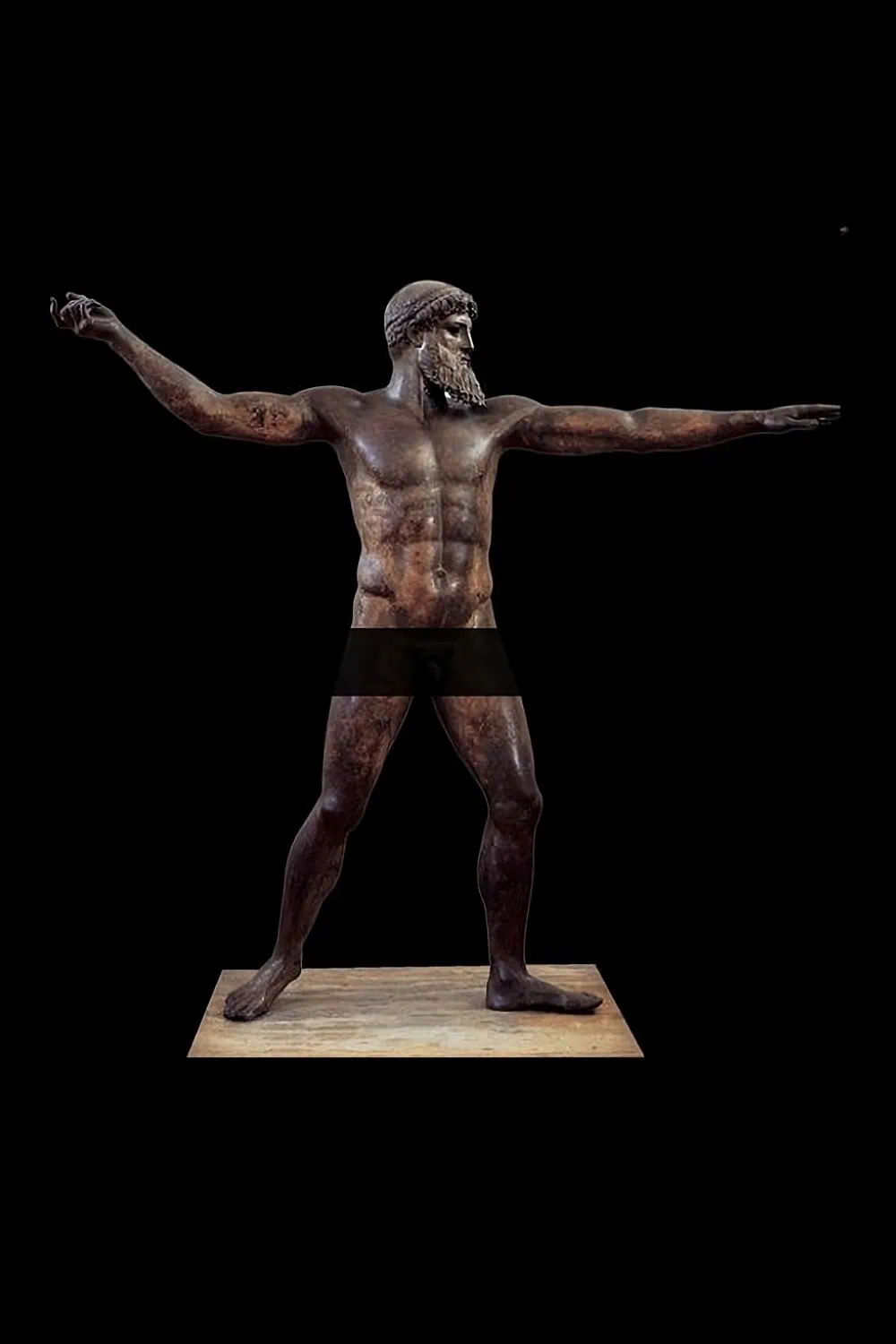
Stoic Assent
- Imagine a spear in that man’s right hand.
- The left hand is a principle, pointing towards virtue/happiness.
- The right hand is trying to align the spear with the left hand.
- If the spear is straight, it will align.
- If crooked, it will not.
- Throw only when the spear in the right hand is aligned with the left hand.
Being handed an action-prompting thought (a hormetic impression) is like being handed a spear. Stoic assent is proper only when the present thought is aligned with a principle.
Ethics
Practicing ethics was to achieve happiness through living a simple life, according to the logos of nature, by living with virtue.
A simple and reasonable life, in which one accepts their place and fate in the cosmos, makes a happy and tranquil life.
Physics
According to Zeno, physics was the science as well as the divine nature of the universe or cosmos.
Zeno saw the cosmos or universe as a living, rational god. He felt all things that exist in the universe are equal parts of the supreme being Zeus, a perfect reasoning entity.
The cosmos accomplishes what is right and preserves what is good. It prevents what is not right, and dissolves what is bad. Since it is a logical entity, it always works out a solution eventually. So, even in difficult situations, it is wise to bear fate without stress or fear.
Stoic Peace of Mind
Zeno taught, that to attain tranquility, we should replace desire with will, fear with caution, and pleasure with joy.
He taught people should learn the value of apatheia. In Stoicism, apatheia is a state of mind in which one is not disturbed by passions. It is best translated as equanimity.
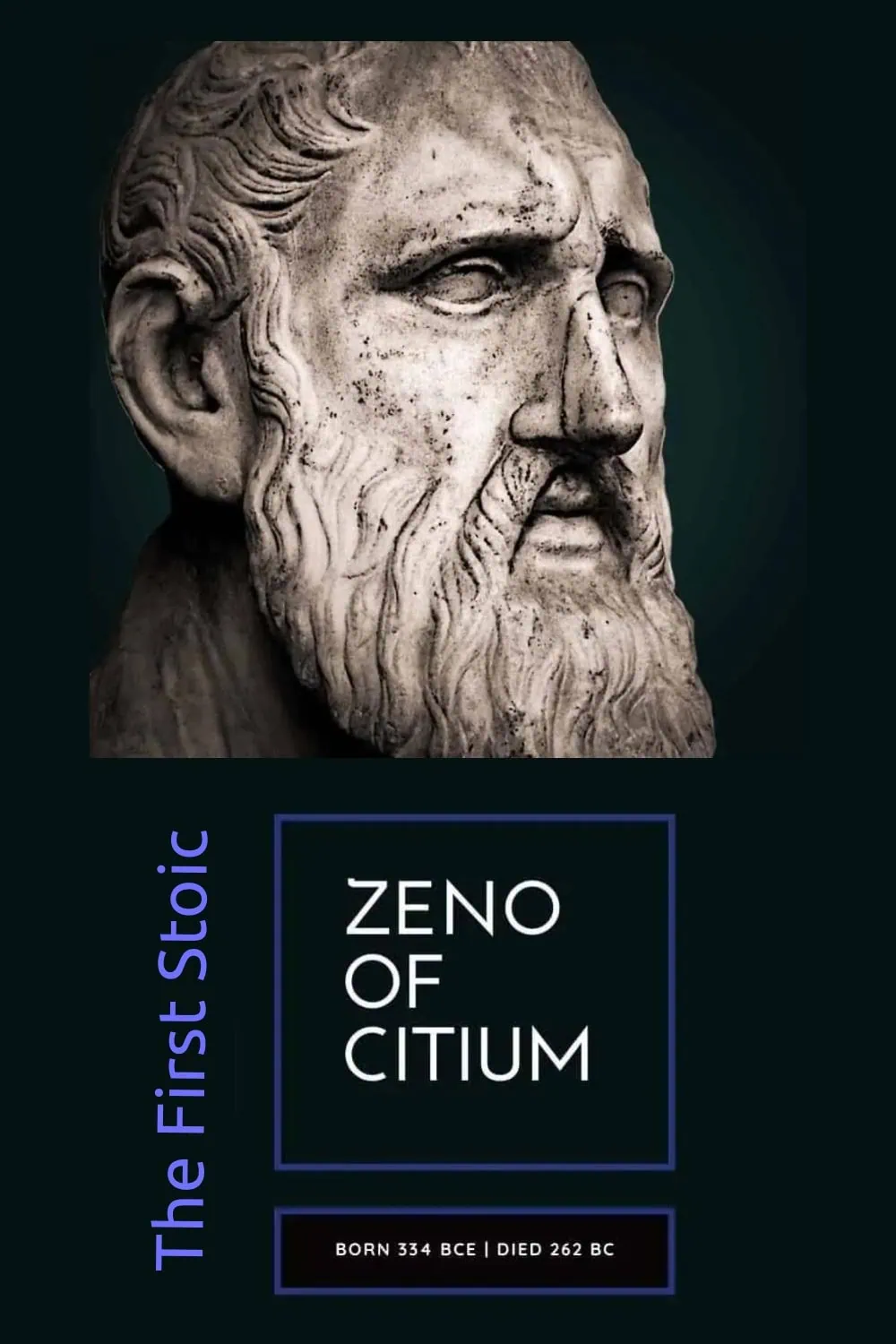
Zeno’s Teachings
One of the most enduring teachings of Zeno was that all humans, including slaves, are equal.
- A Stoic should learn how to control their emotions, thoughts, and desires.
- They should know how to be indifferent to both pleasure and pain.
- They should always do what is just, appropriate, and virtuous.
Zeno divided things into good, bad, and indifferent. The good things belonged to virtue and used virtue; the bad things were of vice and used vice. Everything else, like health, beauty, strength, honor, victory, and death, were indifferent things.
Andreas Athanas writes these words about Zeno’s legacy in his 2019 book Mastering The Stoic Way Of Life:
Zeno, even in today’s day and age, is still relevant in that his teachings remind us of the impermanence of all that our society holds dear. And, in the end, when everything is stripped away and we are left facing the void of death, Zeno reminds us that to die is the only rational end for us and that so long as we lived according to selves and our rationality, we have nothing to fear of death.
The Death of Zeno
The way Zeno died may seem strange today.

One day, at the age of 72, as he was leaving the Stoa after finishing his lecture, he tripped and fell, and broke a toe. He saw this as a sign from the cosmos that his time had come.
Down on the ground, he looked to the sky and quoted a line from Timotheus, a poet:
“I come of my own accord; why then call me?”
Since a Stoic was always to do what is in accordance with nature (kathêkon), he strangulated himself to death.
In a way, even in his last hour, he followed his mentor, Socrates, by courting death by suicide.
5 Quotes by Zeno

Five most famous quotes of Zeno—the first Stoic:
- Happiness is a good flow of life.
- Man conquers the world by conquering himself.
- We have two ears and one mouth, so we should listen more than we say.
- Well-being is attained by little and little, and nevertheless is no little thing itself.
- When a dog is tied to a cart, if it wants to follow, it is pulled and follows, making its spontaneous act coincide with necessity. But if the dog does not follow, it will be compelled in any case. So it is with men too: even if they don’t want to, they will be compelled to follow what is destined.
FAQs
What did Zeno say on love?
Zeno advocated universal love, that we should love all fellow human beings, including our enemies and ourselves.
“Love is a God, who cooperates in securing the safety of the city.” — Zeno of Citium (as quoted in Deipnosophists by Athenaeus, xiii. 561c).
When and where was Zeno born?
When and how did Zeno die?
√ Also Read: Zany Tales of The Rudest Philosopher Ever: Diogenes of Sinop
√ Please spread the word if you found this helpful.
